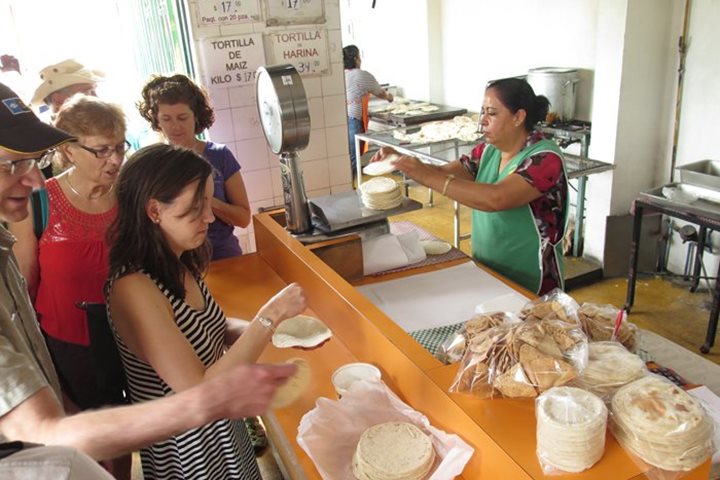Today we had the great opportunity to take a novel excursion into one of the oldest and most remarkable towns in the peninsula of Baja California—Todos Santos. Regarded as one of the “Magic Towns” of Mexico (government category that implies heritage, national patrimony, and conservation), Todos Santos treasures the old, Colonial flavor of long-lost times. It was founded originally as early as 1723 by Father Bravo, and re-founded in 1733 by Father Segismundo Tamaral. Todos Santos readily recalls the missionary efforts to tame and colonize the wild, dry lands of the peninsula, the martyrdom of the Jesuits, and the establishment of a chain of beautiful churches along the harshest terrain in the country. Built in one of the 32 oasis of the península, Todos Santos is today the refuge of retired Mexican and US painters, surfers, vaqueros, and farmers.
Guests and naturalists made their way from the National Geographic Sea Bird from La Paz to Todos Santos on a couple of coaches. In the road we enjoyed the real ecosystem of the Sonoran Desert. Once at the town, we visited the local museum with all the recovered agricultural, office, and cattle ranching tools and machinery of the post-Jesuit epoch, contemplated the reproductions of the Indians’ and Californios’ adobe and palo-arco houses and old oil paintings, and enjoyed a collection of photos dating from the Revolution’s years of Mexico: portraits of General Pancho Villa and General Emiliano Zapata in their historical entry to Mexico City commanding their respective armies, the aspect of the very old Todos Santos town, with the prominent families and people, and so on. After the museum the party visited the old church, which is not the original founded by the missionaries, but as old as the town itself. A big “Nacimiento” (a nativity scene: the little barn, and Mary and Joseph waiting for the Christ child, and nomadic goat keepers around, as traditionally depicted in Mexico) ornamented the altar of the church. Following this our guests were celebrated with a magnificent lunch at the local Santa Fe restaurant, finishing with a delicious mango sourbet. We left Todos Santos in the afternoon with the impression of having penetrated the mists of time, in something beyond our normal perception of history.
On the National Geographic Sea Bird we enjoyed the cocktail hour and local musicians, Los Navegantes, playing Mexican romantic songs for us while Mexican naturalist William Lopez Forment explained and translated the songs. Dinner followed this lovely moment.







